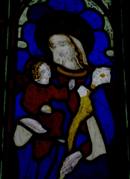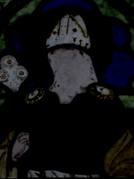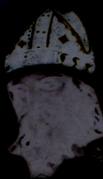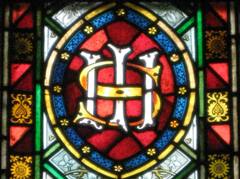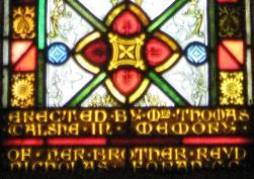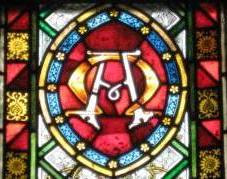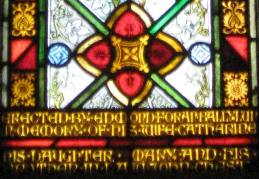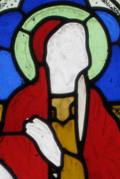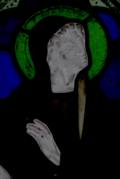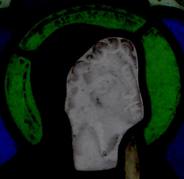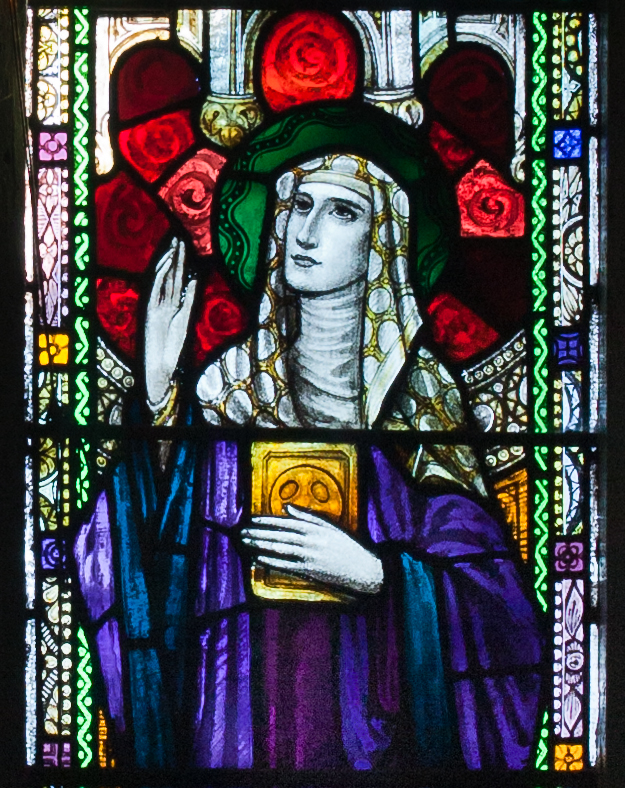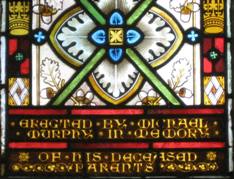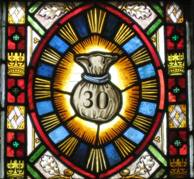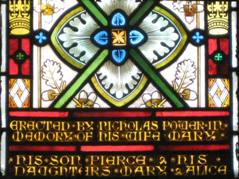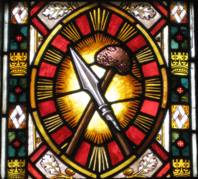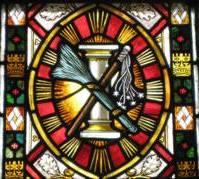The Alpha-Omega window
The letter alpha (α) is the first letter of the Greek alphabet. The second letter is beta (β) and the word “alphabet” is formed from the names of these two letters. The last letter of the alphabet is omega (ω). These are the lower case or small letters. The capital letters are Α, Β, and Ω, respectively.
The combination of Α and Ω is used to refer to God who is the beginning and end of all things –
“I am the first and the last” [Isaiah 44:6]
“‘I am the Alpha and the Omega,’ says the Lord God, ‘who is, and who was, and who is to come, the Almighty.'” [Revelations 1:8]
The dedication at the bottom of the window is shown in the image at far right and reads,
ERECTED BY EDMOND FORAN BALLYLAN
IN MEMORY OF HIS WIFE CATHERINE
HIS DAUGHTER MARY AND HIS
BROTHER-IN-LAW JOHN CHEST



